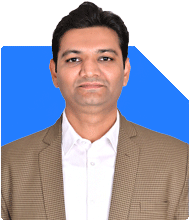How to Invest 73 Lacs from Flat Sale in Mumbai with No Capital Gains?
Ramalingam Kalirajan |10893 Answers |Ask -Follow
Mutual Funds, Financial Planning Expert - Answered on Mar 26, 2025
He has an MBA in finance from the University of Madras and is a certified financial planner.
He is the director and chief financial planner at Holistic Investment, a Chennai-based firm that offers financial planning and wealth management advice.... more

Dear Experts, As I have sold my flat for Rs 73 lacs in Mumbai, and I have no capital gains in that. Kindly let me know the best possible way to invest. As of now I am not interested in SWP.
Understanding Your Investment Goals
Before investing, it is important to define your financial objectives. Different investment instruments serve different purposes.
Short-Term Goals (0-3 years): Emergency fund, travel, planned expenses.
Medium-Term Goals (3-7 years): Buying a car, funding a business, higher education.
Long-Term Goals (7+ years): Retirement planning, wealth accumulation.
Since you are not interested in SWP, your focus should be on capital growth rather than generating regular cash flow.
It is also essential to maintain liquidity for unforeseen expenses. A portion of your funds should be in easily accessible instruments.
Asset Allocation for Maximum Returns
A well-balanced investment strategy involves diversification across multiple asset classes. This helps in reducing risk and optimizing returns.
A strategic allocation of your Rs. 73 lakh can be:
Equity Mutual Funds: 60-70% for high growth.
Debt Instruments: 20-25% for stability.
Gold ETFs or Sovereign Gold Bonds: 5-10% for inflation hedge.
Liquid Investments: 5-10% for emergencies.
The percentage allocation depends on your risk appetite and time horizon.
Equity Mutual Funds for High Growth
Equity mutual funds are one of the best options for long-term wealth creation. They offer superior returns compared to other asset classes.
Why Actively Managed Funds Over Index Funds?
Actively managed funds aim to outperform the market, while index funds only track it.
Skilled fund managers adjust portfolios based on market conditions.
Index funds lack flexibility and can underperform in volatile markets.
By investing in actively managed funds, you can potentially achieve better returns over a long period.
Recommended Categories of Equity Mutual Funds
Flexicap Funds: Invest across market capitalizations for diversification.
Large & Midcap Funds: Balance between stability and growth.
Focused Funds: Invest in a limited number of high-conviction stocks.
Thematic & Sectoral Funds: Suitable for high-growth industries but should not exceed 10-15% of your equity allocation.
By distributing your funds across these categories, you can manage risk while optimizing returns.
Debt Investments for Stability
Equity markets can be volatile, so having debt investments is essential for stability.
Why Debt Investments?
Provides predictable returns with lower risk.
Helps in portfolio diversification.
Protects against stock market fluctuations.
Suitable Debt Instruments
Corporate Bonds: Offer better returns than fixed deposits.
Debt Mutual Funds: Provide flexibility and tax efficiency.
Government Securities: Low-risk investment for capital protection.
Avoid bank fixed deposits unless you need absolute safety, as they may not beat inflation over time.
Gold Investments for Inflation Hedge
Gold acts as a hedge against inflation and economic uncertainties.
Best Ways to Invest in Gold
Gold ETFs: Offer liquidity and easy trading.
Sovereign Gold Bonds (SGBs): Provide additional interest income.
Limit gold allocation to 5-10% of your portfolio to maintain diversification.
Tax Considerations for Optimized Returns
Understanding taxation is crucial for effective investment planning.
Tax on Equity Mutual Funds
Long-Term Capital Gains (LTCG): Gains above Rs. 1.25 lakh are taxed at 12.5%.
Short-Term Capital Gains (STCG): Taxed at 20%.
Tax on Debt Mutual Funds
Both LTCG and STCG are taxed as per your income tax slab.
By strategically planning withdrawals, you can reduce tax liability.
Importance of Investing Through a Certified Financial Planner
Certified Financial Planners (CFPs) have expertise in fund selection and risk management.
Investing through a Mutual Fund Distributor (MFD) with CFP credentials ensures proper advisory support.
Direct funds may lack expert guidance, leading to uninformed investment decisions.
Investing through a professional can help in selecting the right funds based on your financial goals.
Liquidity Planning for Emergencies
Since you have Rs. 73 lakh, it is important to set aside a portion for unexpected expenses.
Keep Rs. 5-7 lakh in liquid funds or high-interest savings accounts.
Ensure accessibility without compromising returns.
This will prevent the need to redeem long-term investments during market downturns.
Review and Rebalancing Strategy
Monitor your portfolio every six months.
Rebalance if any asset class exceeds its target allocation.
Avoid frequent changes to stay aligned with long-term goals.
Market fluctuations can impact your asset allocation. Regular reviews ensure your portfolio remains on track.
Risk Management and Market Volatility
Investing in equity involves risks, but strategic planning can minimize them.
Stay invested for the long term to ride out market fluctuations.
Avoid panic selling during corrections.
Maintain diversification to reduce portfolio risk.
Risk management is crucial for sustained wealth creation.
Final Insights
Invest with a clear long-term strategy.
Diversification ensures balanced growth and stability.
Regular review and professional guidance enhance returns.
Minimize tax impact by planning withdrawals strategically.
Stay committed to long-term goals without getting influenced by short-term market movements.
By following this structured approach, your Rs. 73 lakh can be invested effectively for wealth creation.
Best Regards,
K. Ramalingam, MBA, CFP
Chief Financial Planner
www.holisticinvestment.in
https://www.youtube.com/@HolisticInvestment
You may like to see similar questions and answers below
Ramalingam Kalirajan |10893 Answers |Ask -Follow
Mutual Funds, Financial Planning Expert - Answered on Aug 27, 2024
Ramalingam Kalirajan |10893 Answers |Ask -Follow
Mutual Funds, Financial Planning Expert - Answered on Aug 29, 2024
Ramalingam Kalirajan |10893 Answers |Ask -Follow
Mutual Funds, Financial Planning Expert - Answered on Sep 02, 2024
Vipul Bhavsar | Answer |Ask -Follow
Tax Expert - Answered on May 15, 2025
Ramalingam Kalirajan |10893 Answers |Ask -Follow
Mutual Funds, Financial Planning Expert - Answered on Dec 15, 2025
Ramalingam Kalirajan |10893 Answers |Ask -Follow
Mutual Funds, Financial Planning Expert - Answered on Dec 15, 2025
Radheshyam Zanwar |6746 Answers |Ask -Follow
MHT-CET, IIT-JEE, NEET-UG Expert - Answered on Dec 15, 2025
Ramalingam Kalirajan |10893 Answers |Ask -Follow
Mutual Funds, Financial Planning Expert - Answered on Dec 15, 2025
Ramalingam Kalirajan |10893 Answers |Ask -Follow
Mutual Funds, Financial Planning Expert - Answered on Dec 15, 2025
Ramalingam Kalirajan |10893 Answers |Ask -Follow
Mutual Funds, Financial Planning Expert - Answered on Dec 15, 2025
Samraat Jadhav |2508 Answers |Ask -Follow
Stock Market Expert - Answered on Dec 15, 2025
Ramalingam Kalirajan |10893 Answers |Ask -Follow
Mutual Funds, Financial Planning Expert - Answered on Dec 15, 2025
Reetika Sharma |425 Answers |Ask -Follow
Financial Planner, MF and Insurance Expert - Answered on Dec 15, 2025
Radheshyam Zanwar |6746 Answers |Ask -Follow
MHT-CET, IIT-JEE, NEET-UG Expert - Answered on Dec 15, 2025























